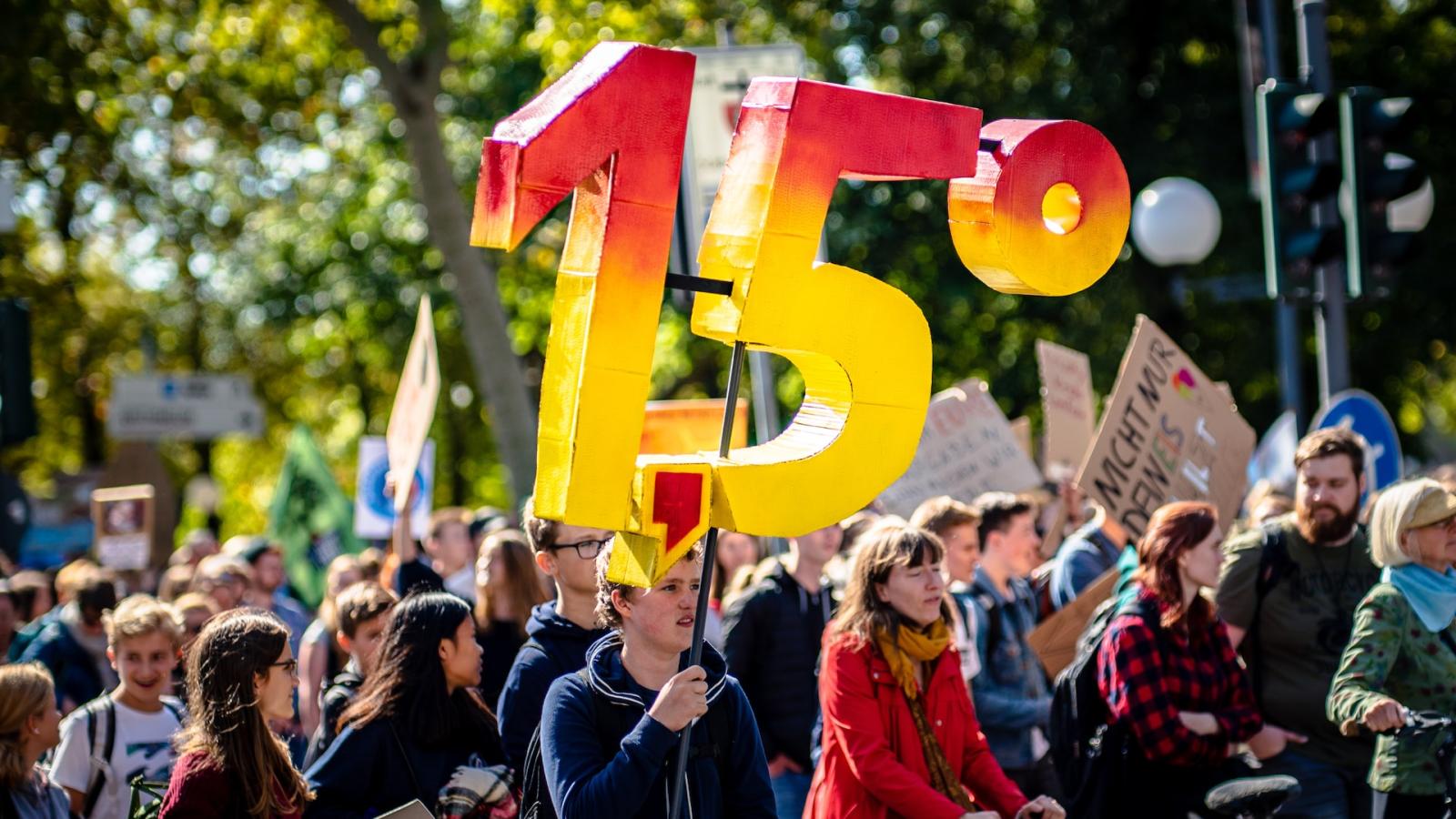Opinion
5 Priorities for Urban Climate Action in 2023 and Beyond
Changing our approach to cities must be at the center of efforts to thwart climate change. As we move further into this decisive decade, here are five critical areas of action for cities.
Mika Baumeister / Unsplash
We now have less than seven years to cut emissions in half in order to keep global warming below 1.5 degrees C, the limit scientists say is necessary for averting some of the most dangerous climate impacts. 2022 saw flooding, drought and severe heat waves kill thousands and affect millions of lives around the world, providing us a small window into what we can expect if we fail. Responsible for more than 60% of global emissions and over half of the world’s population, changing our approach to cities must be at the center of efforts to thwart climate change.
We are more keenly aware of the impacts of climate change than ever before. But we also have more knowledge than ever on how to transition to a low-carbon, resilient and inclusive future. As we move further into this decisive decade, here are five critical areas of action for cities.
1) Integrate Climate Goals into All Key Urban Decisions
To accelerate the low-carbon transition, we need to address a range of urban systems, unlocking collaboration not only across different levels of government — from local to metropolitan to national — but also across sectors and institutional boundaries. Land use, transport and housing decisions in cities, to name a few, all have significant climate consequences, but the agencies in charge rarely factor climate change into their planning and implementation processes. Cities must work to embed climate goals into all of these realms, including strategy and budgetary planning, while connecting climate actions across sectors.
WRI recently launched its Integrated Climate Action program to provide technical support and capacity-building to embed climate solutions into city-level strategic planning, land use, management and financial processes. But cities can’t do it alone. We also plan to facilitate collaboration between local, regional and national governments to unlock the right enabling conditions.
As a key aspect of integrated climate action, cities’ interests and the opportunity they provide for mitigation and adaptation must be represented on the global stage. The latest UN climate summit (COP27) yielded progress on that front, through the first-ever Ministerial Meeting on Urbanization and Climate Change, a high-level event that amplified the voice of cities in a realm normally dominated by national governments. This important moment needs to be the start of cities playing a more meaningful role in the UNFCCC and national climate policies worldwide.
Efforts like Cities Race to Zero, which has so far garnered more than 1,100 city commitments to reach net-zero emissions by mid-century at the latest, will not be successful without more vertical and horizontal integration of city climate plans and requisite support for them at the national and international levels.

2) Make Buildings Efficient and Resilient
The energy crisis in Europe and elsewhere caused by Russia’s illegal war in Ukraine has led to a renewed focus on policies to curb surging energy prices. It is imperative that energy efficiency underpins this response.
Energy efficiency in buildings is the single-most cost-effective greenhouse gas mitigation action available and represents the best opportunity to reduce electricity demand, household bills and energy poverty. Yet WRI research shows that the pace of clean energy retrofits for buildings is just one-sixth of where it needs to be to hit 2030 decarbonization goals.
A building sector transformation led by cities is essential — not only to achieving climate goals, but also to providing affordable housing, resilient infrastructure, green jobs, and healthy living and working spaces for all.
Connecting local building policy to national and international climate agendas can help achieve short- and long-term building decarbonization goals. An example of a vertically integrated national building decarbonization “roadmap” can be seen in Colombia. Part of the Zero Carbon Building Accelerator, Colombia has a highly detailed plan that connects political, financial, technological and capacity-building actions to short-, medium-, and long-term goals and identifies specific actors responsible for implementation. Without these roadmaps and aligned subnational strategies and action plans, commitments like net-zero targets produce little practical change in cities.
WRI and partners are also working with local governments in India, Kenya and Costa Rica to develop more local building decarbonization action plans aligned with national and international climate commitments.

3) Decarbonize Transportation
The transition to zero-emission vehicles is well underway, creating meaningful downward pressure on fossil fuel dependence. But the transition is not proceeding quickly everywhere, and we know it needs to be accompanied by changes beyond engine type.
Global collaborations, leadership coalitions and knowledge-sharing are key to bringing the EV transition to more cities and creating holistic low-carbon mobility systems that also include high-quality public transport and active mobility.
Aggregation of demand is one way can cities advance their transport decarbonization goals faster. The largest transportation alliance in the world, Accelerate to Zero, was launched at COP27 with the support of more than 200 organizations from the public, private and non-profit sectors. Building on scattered momentum globally, the coalition aims for all new car and van sales to be zero-emission in major markets by 2035 and everywhere by 2040.
India’s Grand Challenge is an example of a nationally led initiative to deploy more electric buses in more cities. Designed to enable mass production of transit buses for any operator in the nation, including municipal agencies, the Challenge has led to the deployment of 5,000 e-buses across five cities so far. Through economies of scale, demand homogenization, better payment terms, and opportunity charging facilitation, among other things, the initiative reduced prices for electric buses to be on par or very close to the operational cost of diesel buses.
Following early success, the government intends to procure 50,000 e-buses by 2030 in a promising case that might be replicated elsewhere.
Active mobility — walking and cycling — is also important for decarbonizing transport, particularly in the developing world. Cities in developing nations already have climate-friendly mode shares, as the vast majority of people walk, cycle or use mass transportation, even when the quality and safety of these systems can be questionable. Such low-carbon transportation modes need to be protected and improved by policies, innovative financial tools and capacity building.
Take, for example, Peshawar, Pakistan’s innovative bus rapid transit and cycling system, the city’s first formal public transit system. The system has improved service and safety for millions of riders. Considering that 50% of trips in urban areas are typically less than 10 kilometers, by designing safe and dignifying transport systems for people rather than cars, developing nations can leapfrog the mistakes of many wealthy countries and avoid the “motorization trap.”

4) Bridge the Urban Services Divide, with Housing at the Center
Inequality is an urban problem. We know that more than 1.2 billion city dwellers worldwide, or one in three, lack access to one or more core urban services, including safe housing, water, sanitation, energy and transportation. In low-income countries, this number rises to two in three urban dwellers; few statistics better illustrate the urgent need to combine climate action with advances on urban inequality and human development.
Empowering and engaging the very communities at risk in creating climate solutions is key to fostering a just transition. Take Iloilo City in the Philippines, which worked with a federation of NGOs and local leaders to relocate communities vulnerable to flooding and sea-level rise.
By addressing land tenure in “informal” areas, solving financing bottlenecks to create new housing, and adopting more integrated spatial planning, they created a more inclusive climate and housing solution.
The huge need for affordable, well-located, well-serviced housing can and must be met in ways that ensure climate resilience for the most vulnerable city residents, who bear the brunt of climate disasters like floods and heatwaves.
WRI’s flagship report, Towards a More Equal City, offers a roadmap for how to unlock such transformative change by specifically bridging the urban services divide. A new companion piece now maps recommendations by key actors in the urban ecosystem, presenting some of the best thinking on priority actions and investments for creating prosperity and improved livelihoods for all residents.

5) Build Climate Resilience, with Water and Nature at the Center
Water and climate challenges are converging in many cities globally — particularly in Africa. By 2050, over two-thirds of Africa’s cities are expected to face extreme climate risks and water-related shocks —including droughts, floods and pollution — impacting the health and productivity of millions.
Nature-based solutions offer a cost-effective way to address water and heat challenges while meeting climate mitigation goals; for example, restoring watercourses, expanding green spaces and introducing porous surfaces can all reduce flood risk. Leveraging private finance while better utilizing and coordinating public sector funds and climate and development aid can help direct more investment toward nature-based solutions in cities.
Developed by WRI and 29 partner organizations, the African Cities Water Adaptation Fund (ACWA Fund) is a new blended finance instrument to channel $5 billion towards urban water resilience solutions in 100 African cities by 2032. The ACWA Fund and its supporting initiative, the ACWA Platform, will enable city leaders to directly access technical support and funding for projects targeting a range of water issues, from household rainwater harvesting to nature-based solutions for flood and wastewater management, to job creation for solid waste management. The ACWA Fund aims to implement 200 projects in 100 cities to directly benefit 29 million people, saving 137 million cubic meters of water and creating 64,000 new jobs.
Fighting Climate Change in Cities
The last year was characterized by deep uncertainty, inequality and human suffering. But it has also seen moments of optimism such as the U.S. federal government’s largest climate investments to date and pro-climate leadership changes in Australia and Brazil. Time is running out, but a world in which people and nature thrive and the climate crisis is at bay is still possible.
We need a dramatic shift in the world’s trajectory, one that can and must be driven by low-carbon, inclusive and resilient cities. These are the urban spaces the world needs – not just to rein in climate change, but to improve the lives of the billions of people who call cities home.
READ MORE
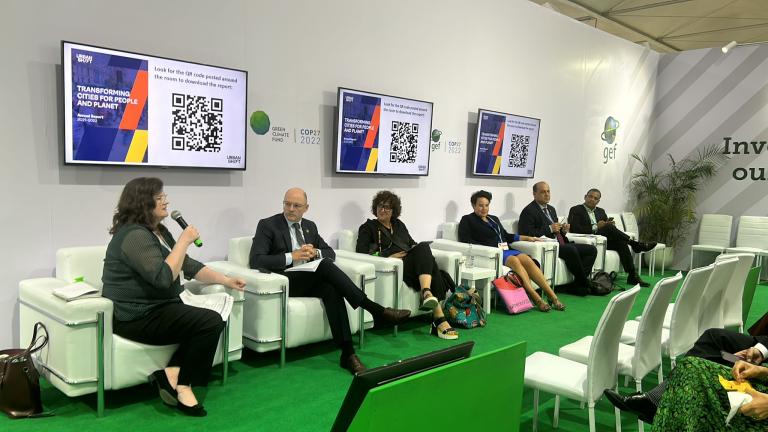
UrbanShift at COP27
UrbanShift led and participated in crucial discussions around climate finance, multi-level governance, and nature-based approaches in Sharm el-Sheikh, providing our stakeholders with a space to share their climate goals and challenges.
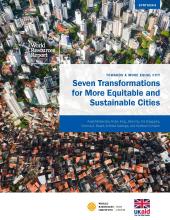
Seven Transformations for More Equitable and Sustainable Cities
This synthesis of the World Resources Report recommends seven transformations to create a new dynamic for durable, cross-sectoral, city-wide change and provides a roadmap to more equitable access to core urban services.
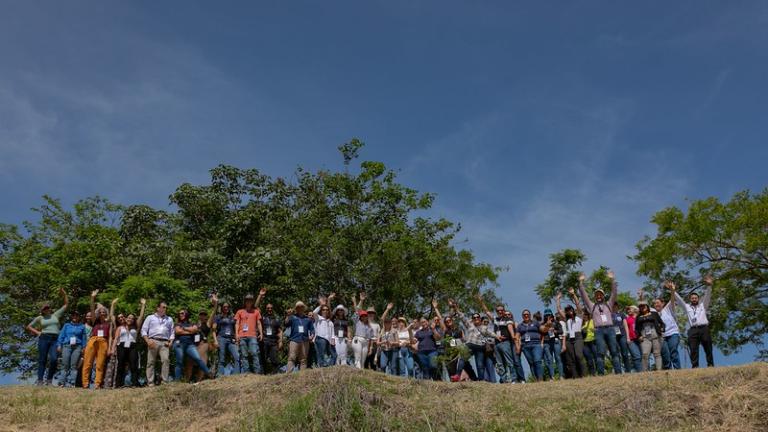
UrbanShift Looks Back: Reflecting on the Impact of our Capacity-Building Offer
WRI’s Mariana Orloff and John-Rob Pool share highlights and learnings from our broad capacity-building efforts, from the City Academy to Peer-to-Peer Exchanges.
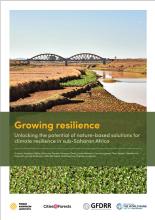
Growing Resilience: Unlocking the Potential of Nature-Based Solutions for Climate Resilience in Sub-Saharan Africa
By analyzing nearly 300 nature-based solutions projects across sub-Saharan Africa from 2012 to 2023, this report offers a comprehensive overview of NBS in the region and provides recommendations to scale NBS projects for climate resilience.
